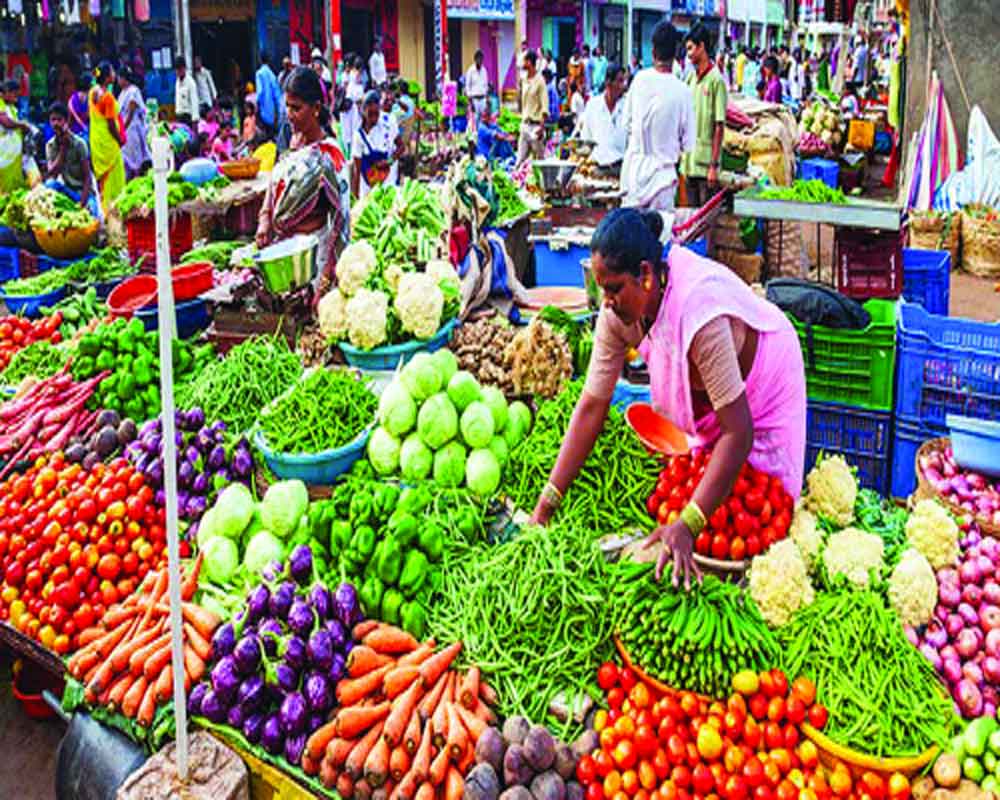India’s experience with cropping patterns is overproduction of a commodity that causes an abrupt fall in prices and heavy losses to farmers
The committee set up by the Union Government at the end of the long-drawn farmers’ protest to decide on the issue of MSP should consider dismantling thediscriminatory price policy and instead adopt the Area Planning approach with an inbuilt guarantee of MSP.
This will reduce the huge Government expenditure and help in optimum utilisation of our scarce land and water resources, fertilisers and other inputs by controlling overproduction.
The practice of Area Planning, already adopted as the alternative mechanism by developed countries like the USA, Australia and the UK,is a tested approach and has proven its worth. In Australia, the departments of agriculture and food provide information and advice to the Australian Planning Commission and local governments to ensure strategic planning at the farmers’ level for the growth of agriculture as per demand of domestic human and animal requirements and industrial use and exports.
In the US and Australia, the zoning process regulates the types of activities that can be accommodated on a given piece of land as well as the amount of space devoted to those activities. Subsidies are also linked to area allocated under a crop. In case of the UK, all farms above five hectares have to get approval for use of land,not only for growing crops but also for constructing buildings, carry out excavations and engineering operations for allied activities.
In India, we have been observing that the overproduction of any commodity causes an abrupt fall in prices and heavy losses to farmers. If procurement is done by the Government, it leads to heavy loss to the exchequer when international prices are lower. Implementation of Area Planning can take care of both these problems and also save on costs of inputs and post-harvest management. Besides, Area Planning will help in optimising the use of scarce resources such as water and fertilizers by preventing a glut in the production of individual commodities.
Before appraising the new approach, we have to understand the ground realities of MSP at the all-India level. As per the estimate reported by NSSO (77th round) in the Situation Assessment Survey (SAS) of agri-householdsfor the agricultural year July 2018 to June 2019, just 8.8 per cent of them sold any crop to the government agencies at MSP.The value of that agri-produce was just 8 per cent of the total value of agriculture (crops plus livestock).
Going by the Census and National Accounts data, the percentages come down to5.6 and 2.2, respectively.At the national level, that translates to less than one per cent in most of North-Eastern states to as high as 50 per cent in Chattisgarh, 30 per cent in Telangana, 28 per cent in Punjab, and 23 per cent in Haryana.
Past experience indicates that farmers from Punjab and Haryana have benefitted the most from the MSP regime because they are more organised and enjoy a lead in resources and production due to the onset of Green Revolution in the 1960s. Of late, procurement has spread in states like Chattisgarh and Telangana for paddy and Madhya Pradesh for wheat. It has resulted in lopsided production. Even though MSPs are announced for 23 commodities, the price support essentially runs for wheat and rice and that too in selected states. We see a highly distorted picture of incentive structure which favours the wheat and rice producing states.
Agricultural economists and experts say MSP distorts the basic logic of the supply-demand mechanism,slows down the process of diversification and is economically a very expensive and inefficient policy instrumentbesides leading to massive leakages and corruption. It cannot augment incomes of small and marginal farmers who represent almost 87 per cent of the total farming community. With an average holding size of 0.9 ha, unless farmers move rapidly towards high-value agriculture,there is not much scope to achieve better incomes for small land holders in an economically efficient and sustainable way.
It is much better to directly help small and marginal farmers with an income policy or through a diversification package towards high value agriculture, the experts advise.
The issue of optimum utilisation of land, water, fertilisers, labour and other inputs also needs to be considered. With a growing population, we have limited land which meets the basicneedsofcereals, pulses, oils, milk, meat, fruits, vegetables, clothing, fuel and shelter. The cropping system should be tailored to local consumption patterns rather than for only getting the maximum price, irrespective of whether the produce has a demand or not.
(The writer is a senior journalist and Chairman, Panwar Group of Institutions, Solan, Himachal Pradesh. The views expressed are personal.)


























